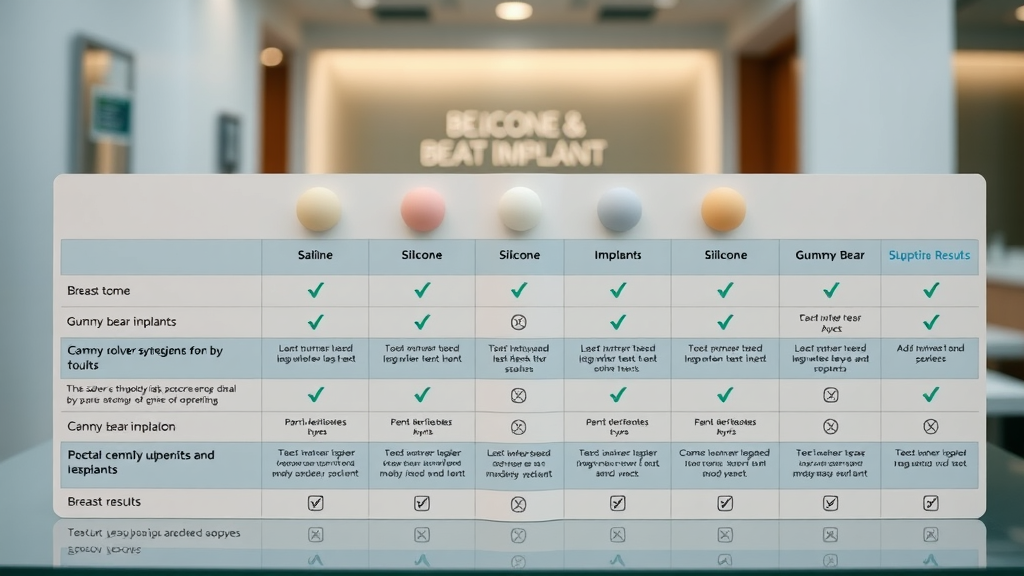In a society increasingly focused on self-expression and body positivity, understanding breast implants can empower your choices and elevate your confidence. Whether you’re considering augmentation or simply curious about the options available, our guide, “Exploring Breast Implants: Your Comprehensive Guide to Choices, Benefits, and Care,” is here to demystify the process. From exploring the various types of implants to understanding their benefits and proper care, this article will equip you with the knowledge to make informed decisions that resonate with your personal journey.
Understanding Breast Implants
What are Breast Implants?
Breast implants are medical devices used to enhance the size and shape of breasts. They are typically filled with either saline (sterile salt water) or silicone gel, and they come in various shapes and sizes to suit individual preferences. The primary purpose of breast implants is cosmetic, but they are also used in reconstructive surgery after mastectomy or injury.
Key Points:
- Types: Saline and silicone are the main types of breast implants.
- Purpose: Used for augmentation or reconstruction.
- Shapes: Available in round or teardrop shapes.
Types of Breast Implants
The two main types of breast implants are saline and silicone, with a third option known as gummy bear implants. Below is a brief overview of each type.
Saline Breast Implants
Saline implants are filled with sterile salt water. They can be filled after placement, allowing for smaller incisions.
Silicone Breast Implants
Silicone implants are filled with a thick gel that mimics the feel of natural breast tissue. They require a slightly larger incision for placement.
Gummy Bear Breast Implants
These are a type of silicone implant with a thicker gel, which keeps the shape even if the implant shell breaks.
| Type | Filling | Key Features |
|---|---|---|
| Saline | Sterile salt water | Adjustable filling, smaller incisions |
| Silicone | Silicone gel | Feels more natural, larger incisions |
| Gummy Bear | Cohesive silicone gel | Maintains shape, less risk of leakage |

Breast Augmentation Procedures
The Breast Augmentation Process
Breast augmentation is a surgical procedure that enhances the size and shape of breasts using breast implants. During the procedure, the surgeon makes an incision, creates a pocket, and places the implant either above or below the chest muscle.
Recovery and Aftercare
After surgery, recovery involves managing pain, swelling, and following specific aftercare instructions from your surgeon.
What to Expect Post-Surgery
- Pain and Discomfort: Some pain is normal, managed with medication.
- Swelling: Expect swelling that will gradually subside over time.
- Follow-Up: Regular check-ups are essential.
Common Recovery Tips
- Wear a supportive bra.
- Avoid heavy lifting and strenuous activities.
- Keep incisions clean and dry.

Risks and Complications of Breast Implants
Common Risks Associated with Breast Implants
While many people enjoy positive results from breast augmentation, it’s crucial to be aware of potential risks and complications that can arise, including:
- Capsular Contracture: Hardening of the tissue around the implant.
- Infection: Can occur post-surgery, though rare.
- Rupture: Implants can leak or rupture, especially silicone ones.
Long-term Safety and Effectiveness
The long-term safety of breast implants is well-documented, but ongoing monitoring is essential. Understanding the potential for complications is vital for informed decision-making.
Capsular Contracture
This occurs when scar tissue forms tightly around the implant, causing discomfort and altering the appearance.
Silent Ruptures
Silicone implants can sometimes rupture without noticeable symptoms, making regular screening necessary.

Breast Implant Safety and FDA Regulations
FDA Requirements for Breast Implants
The FDA regulates breast implants to ensure their safety and effectiveness. Manufacturers must provide detailed information regarding risks, benefits, and post-operative care.
Patient Safety and Health Risks
Patients must be aware of the potential health risks associated with breast implants, including the need for routine monitoring.
Monitoring Your Breast Implants
Regular check-ups, including MRI screenings, are recommended for silicone implants to detect any leaks or ruptures.
Importance of Regular Screenings
Regular imaging helps to ensure that breast implants are functioning correctly and to catch any issues early.

Choosing the Right Breast Implant
Considerations Before Surgery
Choosing the right breast implants involves considering various factors, including:
- Desired Size: What size do you want to achieve?
- Body Type: Different body types work better with certain implant shapes and sizes.
Consultation with a Plastic Surgeon
Consulting with a certified plastic surgeon is critical. They can provide guidance based on your body type and desired outcome.
Questions to Ask Your Surgeon
- What type of implants do you recommend?
- How many procedures have you performed?
- What are the risks associated with my chosen implants?
Understanding Your Body Type and Goals
Understanding your unique body type is essential for choosing the best implant option that aligns with your personal goals.

Post-Operative Care and Lifestyle Adjustments
Managing Pain and Discomfort
After surgery, managing pain effectively is crucial for a smooth recovery. Follow your surgeon’s recommendations for pain management.
Returning to Physical Activities
Gradually return to physical activities, paying close attention to your body’s signals.
Avoiding Heavy Lifting
Avoid lifting heavy objects for at least six weeks post-surgery to prevent complications.
Monitoring for Adverse Symptoms
Stay alert for any unusual symptoms, such as severe pain or swelling, and contact your healthcare provider immediately.

Understanding Breast Implant Illness
Symptoms and Diagnosis
Some patients report systemic symptoms related to breast implants, often referred to as Breast Implant Illness (BII). Symptoms may include fatigue, joint pain, and cognitive issues.
Treatment Options
If experiencing symptoms, consulting with healthcare providers is essential for diagnosis and treatment.
Consulting with Healthcare Providers
Seek advice from medical professionals familiar with BII for appropriate care.
Importance of Patient Education
Educating yourself about the potential risks and symptoms can help in making informed decisions regarding your health.

Comparative Analysis of Breast Implants
Saline vs. Silicone Implants
Understanding the differences between saline and silicone implants can help you make an informed choice.
Gummy Bear vs. Traditional Implants
Gummy bear implants provide a firmer structure compared to traditional implants. Here’s a comparison:
| Aspect | Saline Implants | Silicone Implants | Gummy Bear Implants |
|---|---|---|---|
| Feel | Less natural | More natural | Very natural |
| Safety | Rupture visible | Silent rupture | Less likely to rupture |
| Shape | Round | Round/teardrop | Teardrop |

Resources and Support for Patients
Patient Care Centers
Finding reputable patient care centers can help in receiving quality information and support throughout your breast implant journey.
Support Groups and Online Communities
Connecting with others who have undergone breast augmentation can provide valuable insights and emotional support.
Finding Your Surgeon
Seek recommendations from trusted sources or consult professional organizations to find certified plastic surgeons.
Accessing Credible Information
Always refer to reliable resources for information regarding breast implants and their associated risks.

Key Takeaways on Breast Implants
Final Thoughts on Safety and Choices
Choosing breast implants is a significant decision that requires careful consideration of the various options and potential risks involved.
Encouragement for Informed Decisions
Stay informed about the latest research and guidelines regarding breast augmentation. Knowledge is power in making decisions that affect your health and self-esteem.
Resources for Further Reading
- Visit the FDA’s Guide on Breast Implants.
- Read patient testimonials and experiences on reputable health websites.
YouTube Video: Breast Implant Surgery Explained

Summary of Key Takeaways
- Types of Breast Implants: Saline, silicone, and gummy bear implants each have unique features.
- Surgery and Recovery: It’s essential to follow post-operative care guidelines for a smooth recovery.
- Risks and Monitoring: Regular check-ups are crucial for long-term safety.
- Informed Choices: Consult with qualified professionals and rely on credible sources for information.
In conclusion, understanding breast implants can empower your choices and enhance your confidence. Whether you are considering augmentation or simply wish to learn more, being informed is the first step toward achieving your goals.
 Add Row
Add Row  Add
Add 






Write A Comment